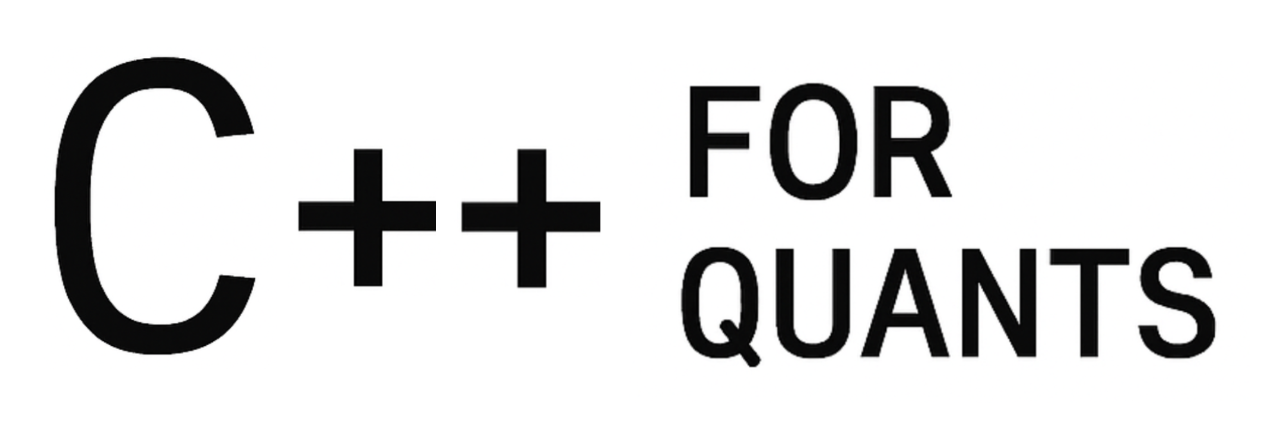What is DV01? In fixed income markets, DV01 (Dollar Value of 01) is one of the most important risk measures every quant, trader, and risk manager needs to understand. DV01 tells you how much the price of a bond, swap, or portfolio changes when interest rates shift by just one basis point (0.01%). This tiny movement in yield can translate into thousands or even millions of dollars in profit or loss for large portfolios.
In other words, DV01 measures interest rate sensitivity in dollar terms. If you’ve ever wondered “What is DV01 in bonds?”, think of it as the financial system’s ruler for measuring how prices react to micro-changes in rates.
For quants, DV01 is the foundation for hedging strategies, scenario analysis, and stress testing. For developers, it’s a key calculation baked into trading systems and risk engines. In this article, we’ll explore what DV01 really is, explain the math behind it, and provide a clean, modern C++ implementation to compute DV01 for single bonds and entire portfolios.
What is DV01?
DV01, short for Dollar Value of 01, measures the dollar change in a bond’s price when its yield changes by one basis point (0.01%). It’s derived directly from the bond’s price–yield relationship: when yields rise, bond prices fall, and DV01 quantifies that sensitivity. Mathematically, DV01 is the negative derivative of price with respect to yield, scaled by 1 basis point:
[math] \Large dv01 = – \frac{dP}{dy} \times 0.0001 [/math]
Where:
- P = price of the bond (in dollars).
- y = yield to maturity (as a decimal, e.g. 0.05 for 5%).
- [math] \frac{dP}{dy} [/math] = the rate of change of the bond price with respect to yield (the slope of the price–yield curve).
- 0.0001 = one basis point expressed as a decimal (1bp = 0.01% = 0.0001).
Example:
A 5-year bond priced at $102 with a modified duration of 4.5 has:
[math] DV01 = 4.5 \times 102 \times 0.0001 = 0.0459 [/math]
This means that if yields go up by just 1bp, the bond’s price will drop by 4.59 cents.
A C++ Implementation
Here is an implementation of a dv01 calcualtion in C++:
#include <iostream>
#include <vector>
#include <cmath>
// --- Bond structure ---
struct Bond {
double face; // Face value (e.g. 100)
double coupon; // Annual coupon rate (as decimal, e.g. 0.05 for 5%)
int maturity; // Maturity in years
double yield; // Yield to maturity (as decimal)
};
// --- Price a plain-vanilla annual coupon bond ---
double priceBond(const Bond& bond) {
double price = 0.0;
for (int t = 1; t <= bond.maturity; ++t) {
price += (bond.face * bond.coupon) / std::pow(1 + bond.yield, t);
}
price += bond.face / std::pow(1 + bond.yield, bond.maturity); // Add principal repayment
return price;
}
// --- DV01 using the bump method ---
double dv01(const Bond& bond) {
constexpr double bp = 0.0001; // One basis point
double basePrice = priceBond(bond);
Bond bumpedBond = bond;
bumpedBond.yield += bp; // bump yield by 1bp
double bumpedPrice = priceBond(bumpedBond);
return basePrice - bumpedPrice; // DV01 in dollars
}
// --- Example usage ---
int main() {
Bond bond = {100.0, 0.05, 5, 0.04}; // Face=100, 5% coupon, 5-year, 4% yield
double price = priceBond(bond);
double dv01Value = dv01(bond);
std::cout << "Bond Price: $" << price << std::endl;
std::cout << "DV01: $" << dv01Value << std::endl;
return 0;
}
This simple struct holds the key attributes of a plain-vanilla fixed-rate bond:
- Face: The amount the bond will pay back at maturity.
- Coupon: Annual interest rate the bond pays.
- Maturity: Number of years until final repayment.
- Yield: Market-required return, used for discounting future cashflows.
To calculate the dv01 here we:
- Takes the original bond price.
- Bumps the yield by one basis point (0.0001).
- Re-prices the bond using the bumped yield.
- Subtracts the bumped price from the original price.
This gives the DV01 the measures how much the price changes when yields shift by 1bp: this “bump method” is exactly what traders and risk systems use.
Compile and Run
Create dv01.cpp containing the code above, as well as a CMakeLists.txt like:
cmake_minimum_required(VERSION 3.10)
project(dv01)
set(CMAKE_CXX_STANDARD 17)
add_executable(dv01 ../dv01.cpp)Then run the compilation:
mkdir build
cd build
cmake ..
makeThen run the program:
./dv01
Bond Price: $104.452
DV01: $0.0457561The code of the application is accessible here:
https://github.com/cppforquants/dv01
Alternative Implementations
When moving from educational examples to real-world analytics, most teams don’t maintain their own pricing code: they turn to professional libraries. In C++, the dominant choice is QuantLib, an open-source framework used by banks, hedge funds, and trading desks worldwide. QuantLib offers several advantages for calculating bond price sensitivity:
- It handles all the details you would otherwise code by hand, including calendars, settlement dates, and day count conventions.
- It includes a wide range of pricing engines, so the same approach works for fixed-rate bonds, floaters, swaps, and even more complex instruments.
- It allows you to shift the yield curve directly and reprice instantly, so bumping rates for sensitivity tests is just a matter of swapping in a different term structure.
- It ensures consistency with market standards, which is critical if your numbers need to match the desk’s systems.
For a teaching example, writing the pricing loop yourself is helpful… But for production, using QuantLib means fewer bugs, faster development, and calculations that match what traders and risk managers expect.
#include <ql/quantlib.hpp>
#include <iostream>
using namespace QuantLib;
int main() {
try {
// 1. Set the evaluation date
Calendar calendar = TARGET();
Date today(26, July, 2025);
Settings::instance().evaluationDate() = today;
// 2. Define bond parameters
Date maturity(26, July, 2030);
Real faceAmount = 100.0;
Rate couponRate = 0.05; // 5% annual coupon
// 3. Build the bond schedule
Schedule schedule(today, maturity, Period(Annual), calendar,
Unadjusted, Unadjusted, DateGeneration::Forward, false);
// 4. Create the fixed-rate bond
FixedRateBond bond(3, faceAmount, schedule,
std::vector<Rate>{couponRate},
ActualActual(ActualActual::ISDA));
// 5. Build the flat yield curve at 4%
Handle<YieldTermStructure> curve(
boost::make_shared<FlatForward>(today, 0.04, ActualActual(ActualActual::ISDA)));
// 6. Attach a discounting engine
bond.setPricingEngine(boost::make_shared<DiscountingBondEngine>(curve));
// 7. Compute base price
Real basePrice = bond.cleanPrice();
// 8. Bump the yield curve by 1bp (0.01%) and reprice
Handle<YieldTermStructure> bumpedCurve(
boost::make_shared<FlatForward>(today, 0.0401, ActualActual(ActualActual::ISDA)));
bond.setPricingEngine(boost::make_shared<DiscountingBondEngine>(bumpedCurve));
Real bumpedPrice = bond.cleanPrice();
// 9. Compute and print sensitivity
Real priceChange = basePrice - bumpedPrice;
std::cout << "Base Price: " << basePrice << std::endl;
std::cout << "Price Change for 1bp shift: " << priceChange << std::endl;
}
catch (std::exception& e) {
std::cerr << "Error: " << e.what() << std::endl;
return 1;
}
return 0;
}
To run the example, install QuantLib (for example, via your system package manager or by building from source) and compile with a standard C++17 or later compiler:
g++ -std=c++17 -I/usr/include/ql -lQuantLib sensitivity_example.cpp -o sensitivity_example
./sensitivity_example
This produces the base bond price and the change in price after a 1bp shift in the yield curve. From there, you can expand the approach:
- Price a portfolio of bonds by looping through multiple instruments and summing their sensitivities.
- Swap in a different term structure (e.g., a real yield curve from market data) to see how results change under new scenarios.
- Experiment with different bond types like floaters or callable bonds by just changing the instrument class and pricing engine.
These extensions show how the same core idea can scale from a single-bond demo into a risk engine component that handles thousands of securities and multiple yield environments.


